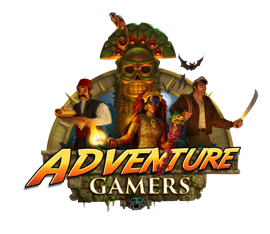Review for Beyond Blue: After the Storm
The greatest strength of Virtual Reality games is the immersive experience compared to playing through a standard screen. VR can put you into the game’s world, allowing you to interact with it in ways that a regular game won’t. Beyond Blue: After the Storm exemplifies this strength by sending you deep into the ocean, surrounded by gorgeous fauna and flora, while tasking you to use your tools to repair, lift, and heal the damage done to it. Unfortunately, the overall experience is far too brief.
Developed by Chaos Theory Games and published by E-Line Media, the story puts you in the shoes of Mirai, an expert in marine biology, assisted by her friend and mentor, Andre, as they descend into the ocean depths to check on a research station that has gone dark. You discover earthquakes releasing methane gas that sickens wildlife and vegetation. Your goal is to find out what is causing the disaster and stop it.
The narrative is competent, and compels you to seek what is causing the destruction and sickness. However, the enjoyment is impaired by the writing and vocal direction. The voice talents are promising, but they don’t have a lot of emotional range. There were places where there could have been significantly more sadness or anger, but the tone mainly borders on neutral. The writing can also be off at certain moments, and the subtitles don’t always align with what the characters are saying. The second issue is the game’s brevity. It took about 1.5 hours to complete, which makes the plot feel improperly explored. You know the “what” before the game’s end, but not much of the “why.” Certain discoveries that could have been expanded are sidelined. The speculations they do elicit make the narrative seem like a plot contrivance that has been explored a thousand times before.
Still, the story is there to set goals for exploration and immersion, which After the Storm gets right. Striding through the deep, magnificent blue is calming, seeing all types of fish, sharks, whales, and the colorful vegetation. Mostly, the creatures just swim around, but you will occasionally see them tussle with one another over territory or encounter a mother fish escorting her young. There are two environmental levels. The first is bright and blue, setting an optimistic tone with moments of red and dread when the odd catastrophe happens. The second level is dark, venturing into the deepest expanses. Shadows and blackish-blue waters pervade your surroundings with only plots of light to guide you.
The sound and music mostly provide background ambiance. You will hear the sounds of the sea creatures around you and some machinery when interacting with your tools and exploring the research bases you discover. There is a soundtrack, but the tunes are subtle and low, even in the most tense moments. It is hard to discern individual instruments, though they do match their environments.
Gameplay adds to the immersion, at least in the beginning. You play as two different characters, but controlling their movements is the same: either pressing two buttons to activate wrist jets while guiding their direction with your hands, or using the left stick to move forward and the right stick up and down for elevation. The former is more immersive, but there are times, such as lifting two-handed objects, when the sticks are needed.
Mirai is a puzzle solver with tools for scanning items, repairing and healing, and cutting through support beams and other obstacles. She is assisted by a robot, Kanaloa, who is responsible for lifting heavy objects and, occasionally, shooting electronics with his wrist launcher. It’s mainly menial tasks, but optional interactions include healing fish and flora either locked up in debris or off the main path, and shooting robots to parachute them to the surface. Still, the tasks become repetitive because the difficulty level doesn’t increase over time. You are supposed to be drawn into the world by interacting with objects, lifting them out of the way, and meticulously using your tools. Yet the luster is eventually lost as you realize that you are not being challenged meaningfully. An example is the keypad puzzles, of which there are only two. The first combination is given to you immediately, while the second can be solved quickly through trial and error; you may stop thinking creatively when the challenges become routine.
Still, Chaos Theory Games succeeds when it comes to an immersive adventure. The levels and their differing moods, the flora, fauna and exquisite natural surroundings, plus the feeling of being below the ocean combine to create a tangible world. Interactions, however, get lost in the shuffle either because they are too easy, stale, or short-lived. Beyond Blue: After the Storm is a pleasant VR game, but it leaves you with the feeling of, “That’s it?” instead of, “I want more!”
Our Verdict:
Beyond Blue: After the Storm’s outstanding visual presentation and mechanics nail the sense of immersion, but the gameplay becomes dull, the story predictable, and the experience is quite short.
You don't want to miss these articles
Adventure Gamers Community
Community reviews for more Adventure Games (randomly selected)
Review of Captain Disaster in Death Has a Million Stomping Boots
Rating by Syd Sacchi (Feb 21, 2018)
Review of Captain Disaster in Death Has a Million Stomping Boots
Rating by Syd Sacchi (Feb 21, 2018)




























